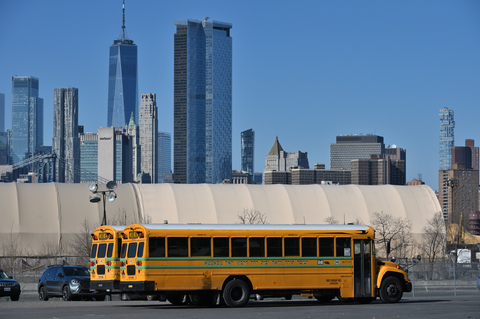Good morning,
For decades, federal funds only made a light footprint in K-12 education, accounting for about 10% of education dollars in most states. When Congress infused approximately $190 billion in stimulus funding into K-12 education during the COVID-19 pandemic, school districts received unprecedented sums of new federal money that was double the amount provided by the 2009 American Recovery and Reinvestment Act.
However, the federal emergency funds are drying up after nearly three years of unparalleled spending on K-12 education. While school districts still have over $70 billion remaining, approximately 37% of all Elementary and Secondary School Emergency Relief (ESSER) funds, these dollars must be allocated by Sept. 2024.
Researchers at Georgetown’s Edunomics Lab estimate that more than half of the remaining federal emergency funds will be used to pay for jobs, and a quarter will pay for “things like learning apps, tutoring, [or] diagnostics.”
While some federal relief funds have been unwisely spent on expenses that aren’t related to getting students back on track, such as synthetic turf for athletic fields and ineffective tutoring programming, the money also helped create high-dosage tutoring programs that have helped students recover from pandemic-induced learning loss. High-dosage tutoring is one-on-one or small-group tutoring and is considered the most effective form of tutoring.
For instance, the Indiana Department of Education partnered with the non-profit Mind Trust to establish Indiana Learns, which provides eligible families with $1,000 grants to use for high-dosage tutoring in math and English/Language Arts.
State and district administrators, however, are keenly aware of an impending fiscal cliff, which will likely force many school districts to rightsize to align with student enrollment, shedding workers and programs adopted during the increased funding during the pandemic.
The loss of federal funding, compounded with declining enrollments, often in urban school districts, means that many districts will also likely experience funding losses from state and local revenues. Lower student counts began before the pandemic and decreased sharply during it. For instance, Texas’ Houston Independent School District lost 20,000 students between its 2017-18 and 2021-22 school years. Similarly, California’s Los Angeles Unified School District has lost 15% of its K-12 enrollment, or 100,000 students, since the 2015-16 school year.
With fewer students, some school districts are already beginning to make hard budgeting decisions as they prepare for a sharp dive in federal and state education funds.
For instance, Chalkbeat reported that Detroit Public Schools Community District eliminated almost 300 positions this summer. In Maryland, Montgomery County Public Schools eliminated tutoring, afterschool, and summer programming.
While some states may boost funding to maintain some pandemic-induced programming or jobs, Edunomics reports that most states are either unwilling or don’t have the funds to fill the massive budget gaps ahead. Tools like Edunomics Lab’s “The Grid” can help school administrators weigh the tradeoffs of various spending decisions. At the same time, schools should avoid unnecessary recurring spending commitments and taper off spending to reflect their current enrollment levels. These budgeting changes will undoubtedly affect many students, families, and staff, so transparent communication with all stakeholders is key to successfully navigating the tough decisions ahead.
From the states
New Hampshire’s charter schools claim a right of first refusal for old school buildings, and New York City Council members pitch school choice.
New York City Council members proposed a bill that would require the city to reimburse parents who send their children to private schools up to $10,000 annually for tuition payments as a way to slow the number of families leaving the city in search of better education options.
In 2021, New Hampshire policymakers passed a law requiring school districts to offer to sell old school buildings to charter schools before anyone else. As of Jan. 2022, there were seven unused school buildings in New Hampshire. State policymakers added a new requirement to the law this summer which requires school districts to comply with a sales timeline after a charter school claimed that a school district ignored their bid on an old school building to avoid competition.
The Wisconsin Senate voted to override Gov. Tony Evers’ partial veto of a budget bill that could provide Wisconsin public schools with annual funding increases for the next 400 years. The governor’s funding increase would provide an additional $325 per pupil each year, totaling $750 million annually. Wisconsin Public Radio reported that the Assembly is unlikely to be able to successfully override the veto.
What to watch
A Montana judge announced that the state’s new charter schools are likely unconstitutional. While the state’s school choice commission can still hire staff, it cannot authorize charter schools while the preliminary injunction is in effect.
A group of more than 130 school districts have joined a lawsuit against Ohio’s EdChoice Scholarship Program, which eligible students can use to pay for private school tuition. Ohio policymakers expanded eligibility to all students in 2023. EdChoice estimates that the average scholarship is valued at $5,800. While nearly 37,000 students received a scholarship in 2022, more than 70,500 students have applied for scholarships since policymakers expanded eligibility earlier this year. The districts say the program violates the state constitution requiring the General Assembly to secure “a thorough and efficient system of common schools throughout the state.”
Florida has approved approximately 345,000 K-12 students for the state’s universal education savings accounts. Doug Tuthill, a school choice proponent with Step Up For Students, estimated that about 100,000 students will end up not using their accounts, according to the Florida Phoenix.
Recommended reading
Outraged Over Admissions Policies at Harvard? Take a Look at Public Schools
Tim DeRoche at The74
“You might think public schools are open to everyone. Unfortunately, they’re not. I’ve spent the last five years looking at the admissions criteria and enrollment procedures for America’s top public elementary schools, and they operate under an archaic and discriminatory assignment system that sorts kids into schools based on government-drawn maps.”
Our Teacher Pay Debate, Still Dumb
Andrew Rotherham at Eduwonk
“When people argue that a teacher can’t pay their rent with a future pension, that’s correct. But it’s also why we have to have a conversation about total compensation and how it’s structured not just assume away those—substantial—costs.“
Where Does School Time Go?
Frederick M. Hess at The American Enterprise Institute
“When all was said and done, the analysts estimated that total instructional time in this school during a given year added up to just 62 percent of the 1,076 hours estimated by OECD. That means more than 400 hours were devoted to stuff other than instruction. That 1,076-hour year turns into a 670-hour year.”

